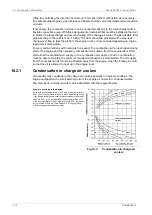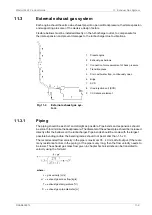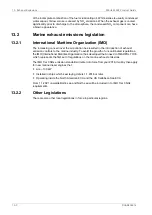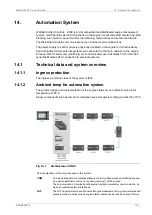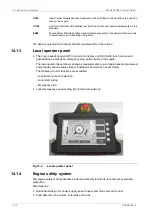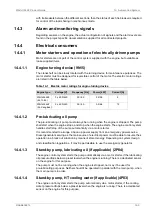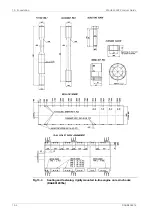
13.
Exhaust Emissions
Exhaust emissions from the diesel engine mainly consist of nitrogen, oxygen and combustion
products like carbon dioxide (CO
2
), water vapour and minor quantities of carbon monoxide
(CO), sulphur oxides (SO
x
), nitrogen oxides (NO
x
), partially reacted and non-combusted
hydrocarbons (HC) and particulate matter (PM).
There are different emission control methods depending on the aimed pollutant. These are
mainly divided in two categories; primary methods that are applied on the engine itself and
secondary methods that are applied on the exhaust gas stream.
13.1
Diesel engine exhaust components
The nitrogen and oxygen in the exhaust gas are the main components of the intake air which
don't take part in the combustion process.
CO
2
and water are the main combustion products. Secondary combustion products are carbon
monoxide, hydrocarbons, nitrogen oxides, sulphur oxides, soot and particulate matters.
In a diesel engine the emission of carbon monoxide and hydrocarbons are low compared to
other internal combustion engines, thanks to the high air/fuel ratio in the combustion process.
The air excess allows an almost complete combustion of the HC and oxidation of the CO to
CO
2
, hence their quantity in the exhaust gas stream are very low.
13.1.1
Nitrogen oxides (NO
x
)
The combustion process gives secondary products as Nitrogen oxides. At high temperature
the nitrogen, usually inert, react with oxygen to form Nitric oxide (NO) and Nitrogen dioxide
(NO
2
), which are usually grouped together as NO
x
emissions. Their amount is strictly related
to the combustion temperature.
NO can also be formed through oxidation of the nitrogen in fuel and through chemical reactions
with fuel radicals. NO in the exhaust gas flow is in a high temperature and high oxygen
concentration environment, hence oxidizes rapidly to NO
2
. The amount of NO
2
emissions is
approximately 5 % of total NOx emissions.
13.1.2
Sulphur Oxides (SO
x
)
Sulphur oxides (SO
x
) are direct result of the sulphur content of the fuel oil. During the
combustion process the fuel bound sulphur is rapidly oxidized to sulphur dioxide (SO
2
). A
small fraction of SO
2
may be further oxidized to sulphur trioxide (SO
3
).
13.1.3
Particulate Matter (PM)
The particulate fraction of the exhaust emissions represents a complex mixture of inorganic
and organic substances mainly comprising soot (elemental carbon), fuel oil ash (together with
sulphates and associated water), nitrates, carbonates and a variety of non or partially
combusted hydrocarbon components of the fuel and lubricating oil.
13.1.4
Smoke
Although smoke is usually the visible indication of particulates in the exhaust, the correlations
between particulate emissions and smoke is not fixed. The lighter and more volatile
hydrocarbons will not be visible nor will the particulates emitted from a well maintained and
operated diesel engine.
Smoke can be black, blue, white, yellow or brown in appearance. Black smoke is mainly
comprised of carbon particulates (soot). Blue smoke indicates the presence of the products
DAAB605814
13-1
13. Exhaust Emissions
Wärtsilä 46F Product Guide
Summary of Contents for 46F Series
Page 1: ...Wärtsilä 46F PRODUCT GUIDE ...
Page 4: ...This page intentionally left blank ...
Page 8: ...This page intentionally left blank ...
Page 18: ...This page intentionally left blank ...
Page 86: ...This page intentionally left blank ...
Page 104: ...This page intentionally left blank ...
Page 154: ...This page intentionally left blank ...
Page 162: ...This page intentionally left blank ...
Page 170: ...This page intentionally left blank ...
Page 176: ...This page intentionally left blank ...
Page 194: ...This page intentionally left blank ...
Page 200: ...This page intentionally left blank ...
Page 202: ...This page intentionally left blank ...
Page 207: ...Fig 21 7 List of symbols DAAF406507 7 DAAB605814 21 5 21 ANNEX Wärtsilä 46F Product Guide ...


